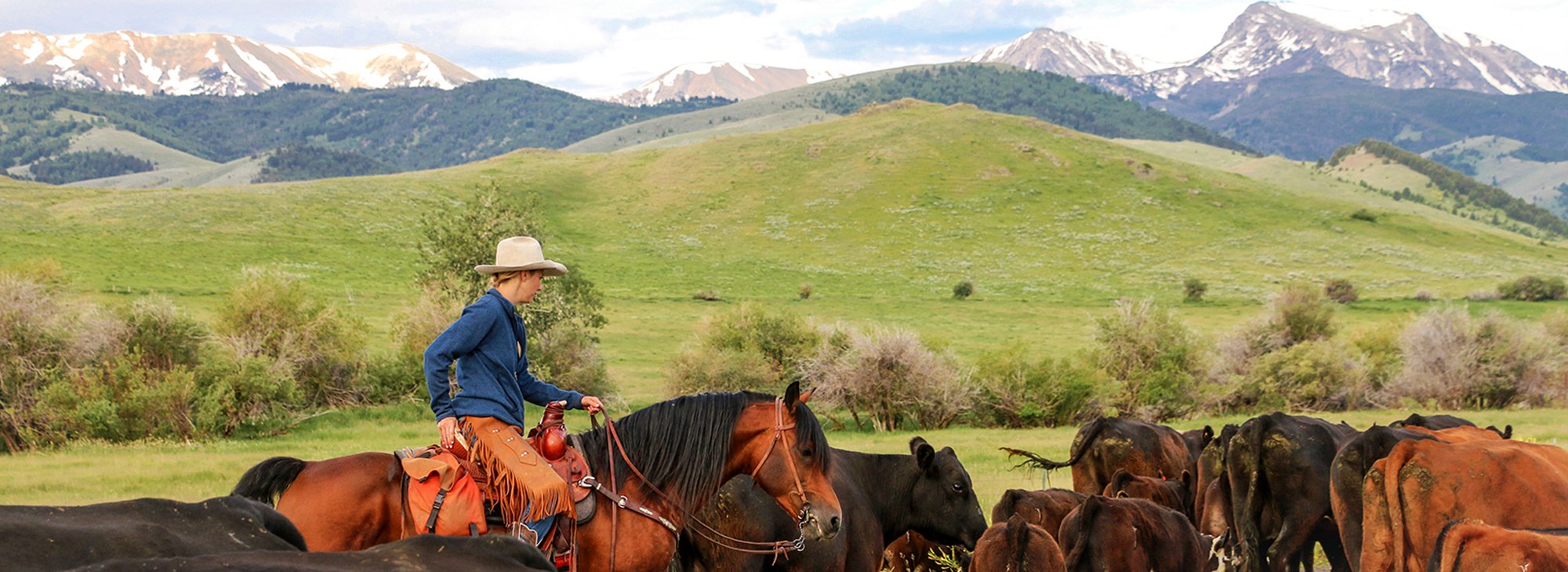Ranch Horse
Began as a pattern class with just 5 patterns for judges to choose from where the riding style of horse and the rider is smooth and efficient as if they were working on a ranch. It has grown in popularity and nowthere are classes for Ranch Rail, Ranch Conformation, Ranch Reining, Ranch Patterns and Ranch Trail as well as others not listed.
Ranch horses should work at a forward working speed, simulating a horse riding outside of an arena. Patterns typically call for many transitions, walk, extended walk, jog/trot, extended jog/trot, lope, extended lope, as well as any combination up or down. Other maneuvers that may be asked for is trot over logs, spins, side-passes, backing and lead changes. The horse should perform these maneuvers softly, smoothly and efficiently. Scoring is on a 0-100 point scale with 70 being an average performance. Riders should not wear bling on their clothes or excess silver on their tack. Chaps are not required, but chinks are very popular. As for the horse, tail extensions, braided manes, and tails, black polish on hooves and clipping inside the ears are not allowed. Leg wraps and boots are not used, but breast collars and rear cinches are encouraged.
Why do Morgans excel at Ranch Riding?
Because they are one of the original ranch horses, having been used on working farms and ranches since the late 1700’s. Morgans are compact, hearty and have ground covering gaits, making them able to cover many miles day after day at a steady rate of speed. Their strongly muscled hindquarters keeps them agile and quick enough to cut cows; while their brains help them outsmart the cows.
Morgan Specific Working Western Rules are found in the Morgan Section.
Pattern examples can be found HERE.
American Ranch Horse Association

